Diversión, entrenamiento y algo más
Mi bici y yo tuvimos un poco de diversión. Decidimos irnos a un cabaré, a un paraíso bajo las estrellas, pero era de día. 😅
¡Ya empecé! 😜
No, a ver, déjame contarte bien los pormenores de esta excursión. De que fuimos al cabaré, fuimos. Que no te quepa dudas. Estoy hablando del emblemático Tropicana, que queda relativamente cerca de donde vivo. ¿Qué digo? No es tan cerca, nada es tan cerca para una ciclista principiante. El mapa de Google dice que en auto te tardas 20 minutos en ir y volver, pero no se puede medir así, porque yo llevaba mi cámara, me detuve algunas veces durante el trayecto, exploré y encontré algo extra y muy interesante que solo te adelantaré un poco aquí. Entonces nuestro recorrido duró poco más de 2 hrs.

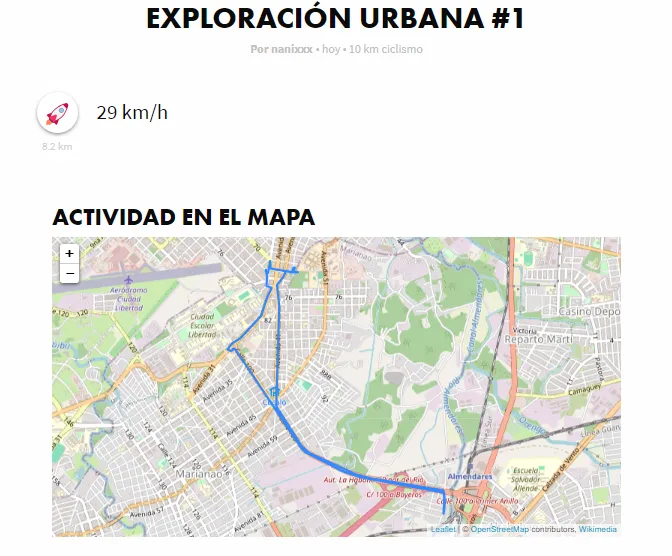
Fueron 10 sabrosos kilómetros. Nada, en realidad. y ciertamente, al cabaré no pudimos entrar por tres razones:
1 - Estaba rentado para una actividad.
2 - De todos modos, era de día, y las bailarinas de Tropicana solo bailan de noche.
3 - Y bueno… no estábamos correctamente vestidas. 😁
Tropicana fue creado en 1939 en una zona boscosa del municipio Marianao. El sobrenombre de paraíso bajo las estrellas se debe a que se concibió al aire libre, lo cual lo hace un poco diferente con respecto a los cabarets tradicionales.
Ofrece un espectáculo muy creativo que bebe del ballet, el arte circense, el carnaval, el bolero, el cha-cha-chá y también del folclor. El baile y la canción se fusionan allí con mucho colorido, gracia y estilo, lo que le ha otorgado a este lugar fama internacional. Tengo que ser honesta, no soy muy de ir a cabarés, aunque no dejo de reconocer que nuestros visitantes foráneos lo pasan muy bien allí.
Esto es lo que tengo para mostrar de nuestra divertida salida a Tropicana.
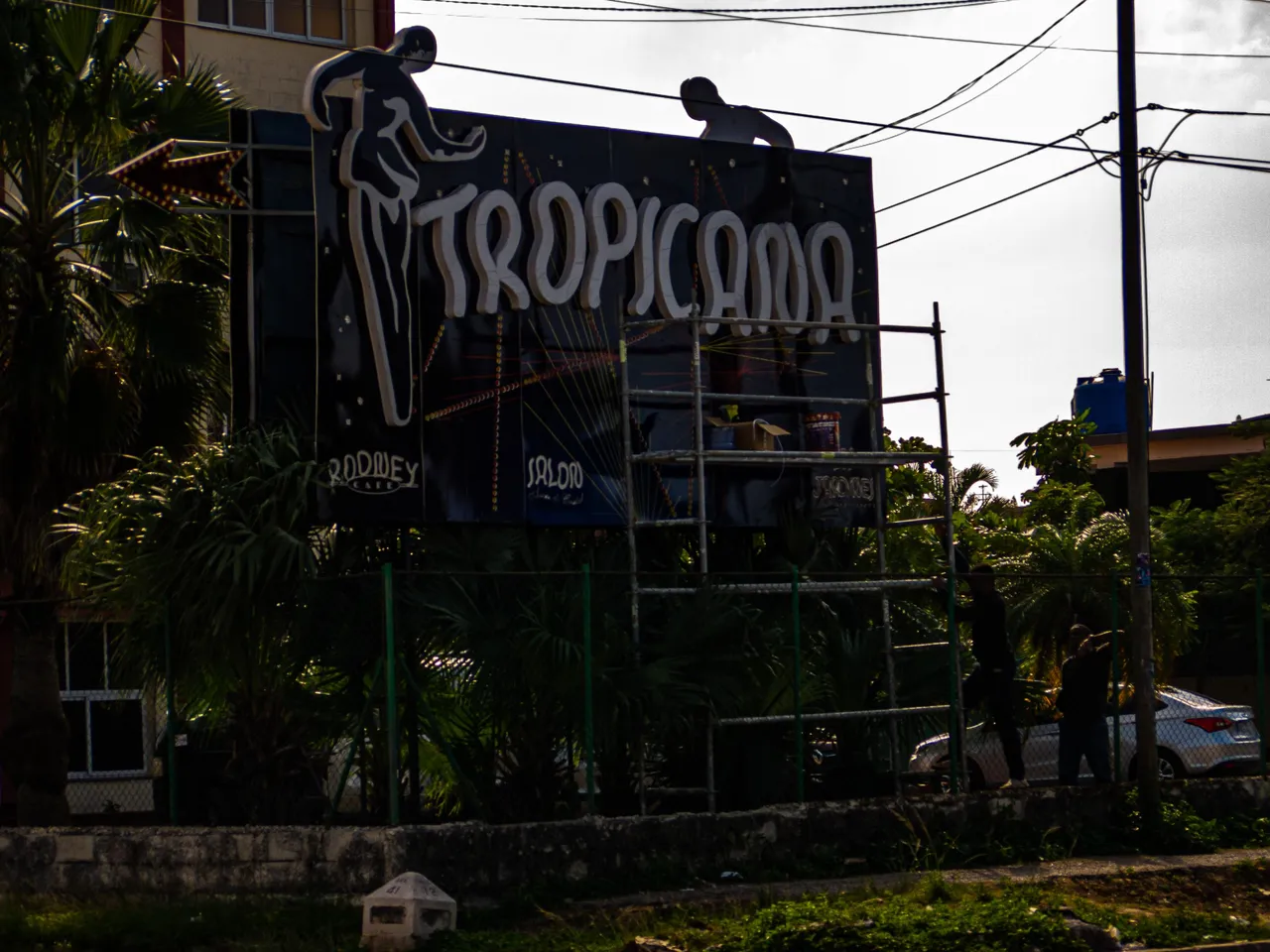
Se trata del cartel que se ve en la Ave.41 y lo estaban restaurando, como puedes notar.
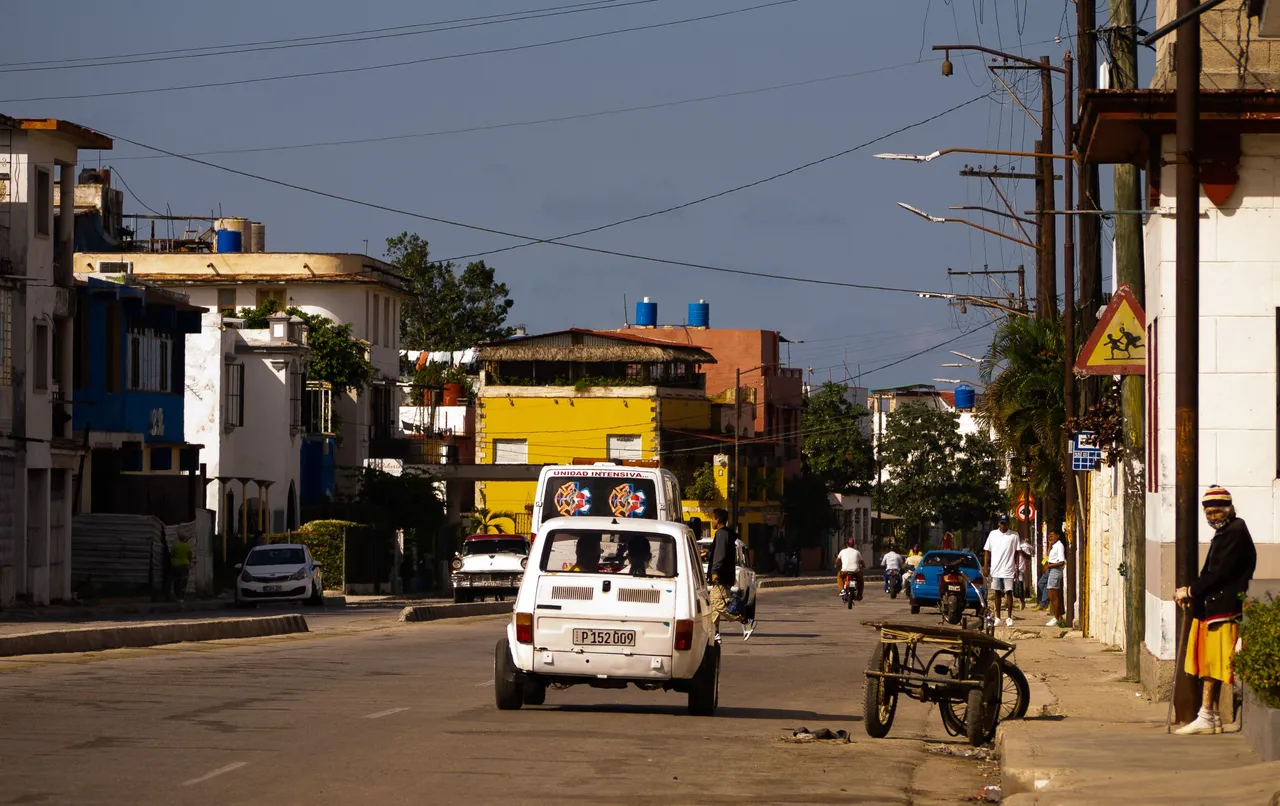
Allí entré a la calle que lleva al cabaré y pude tomar otras vistas.
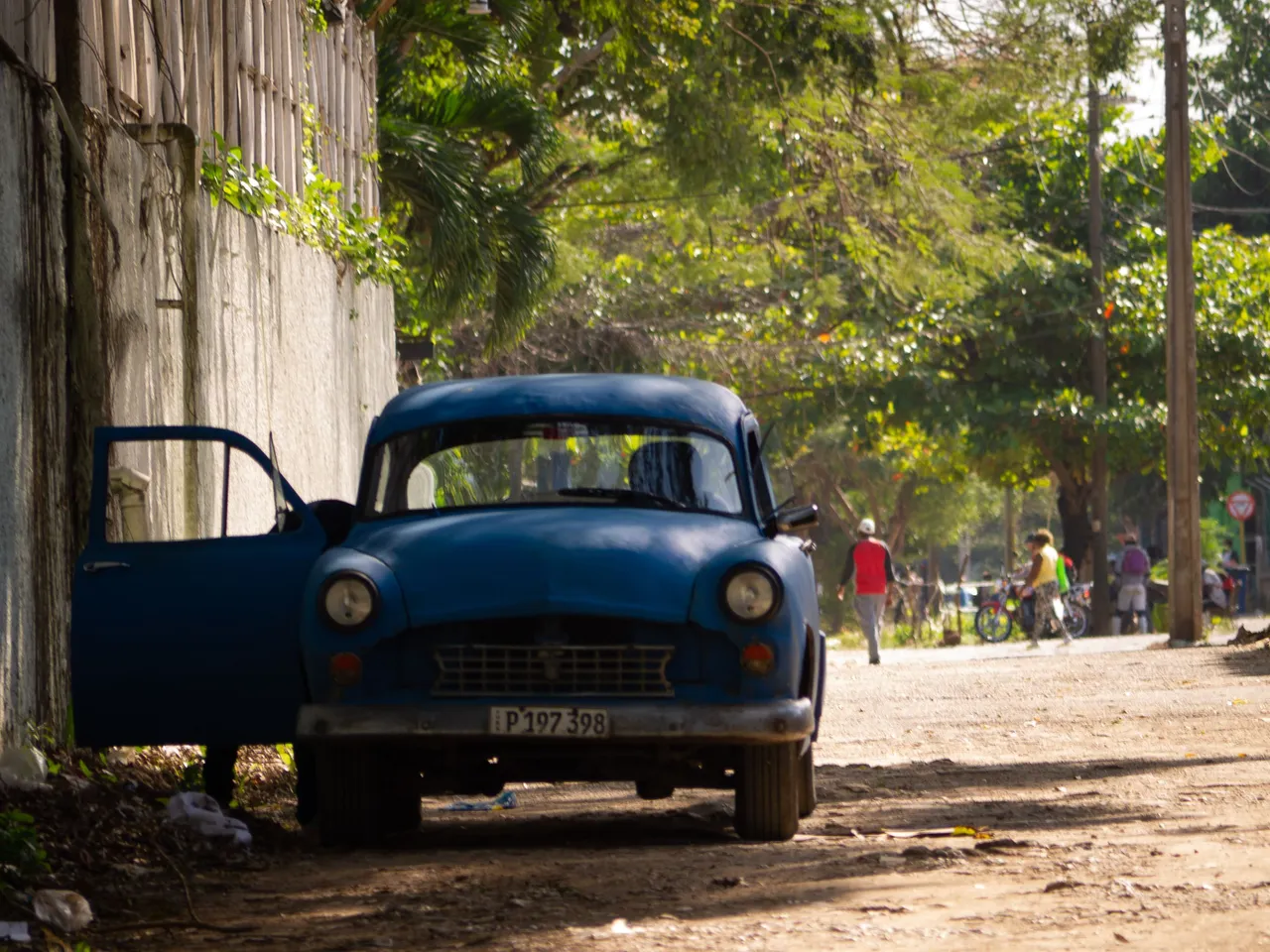
Esta es una callejuela aledaña a Tropicana.
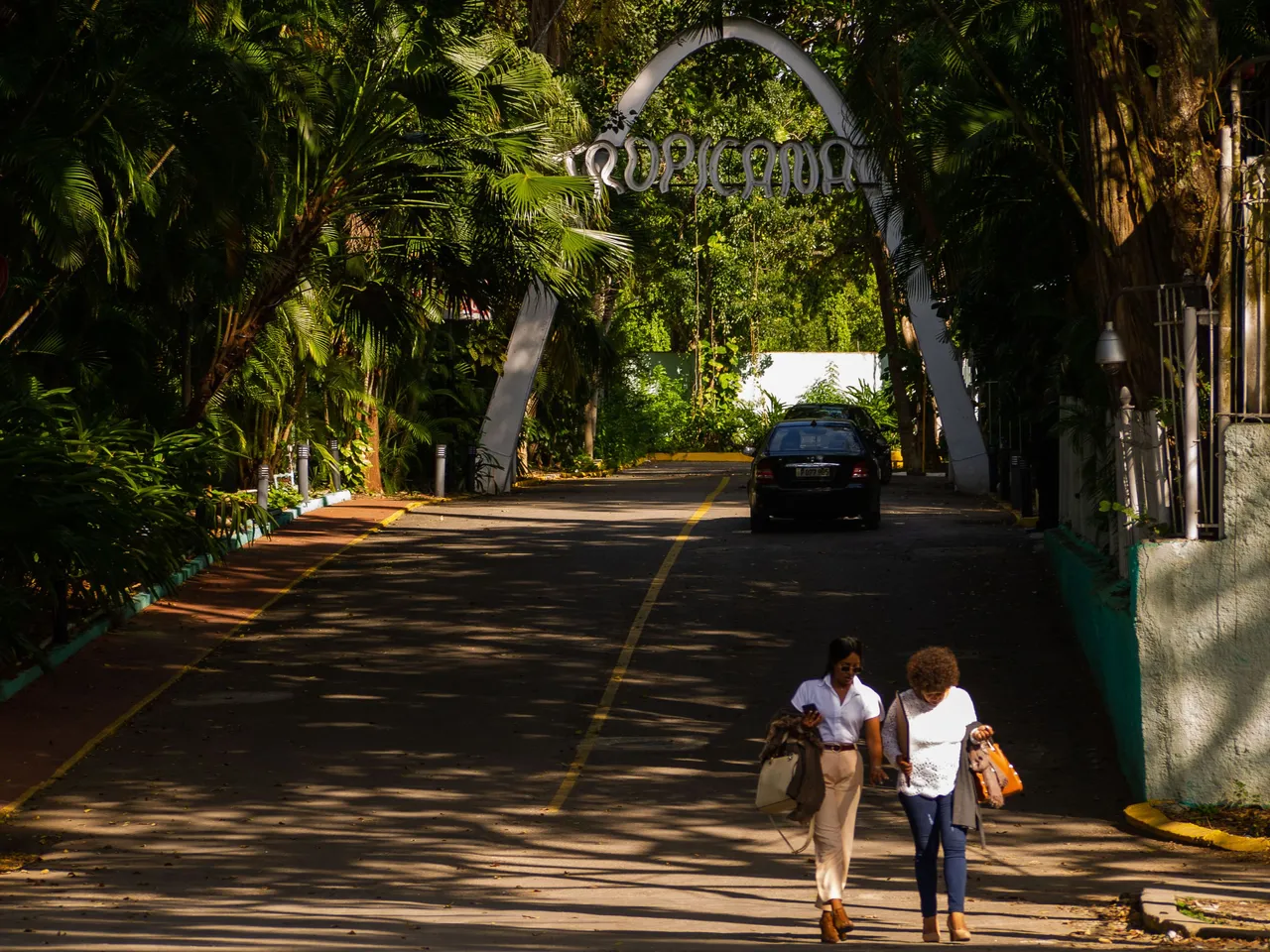
Y ellas parece que se aburrieron de la actividad. 😂
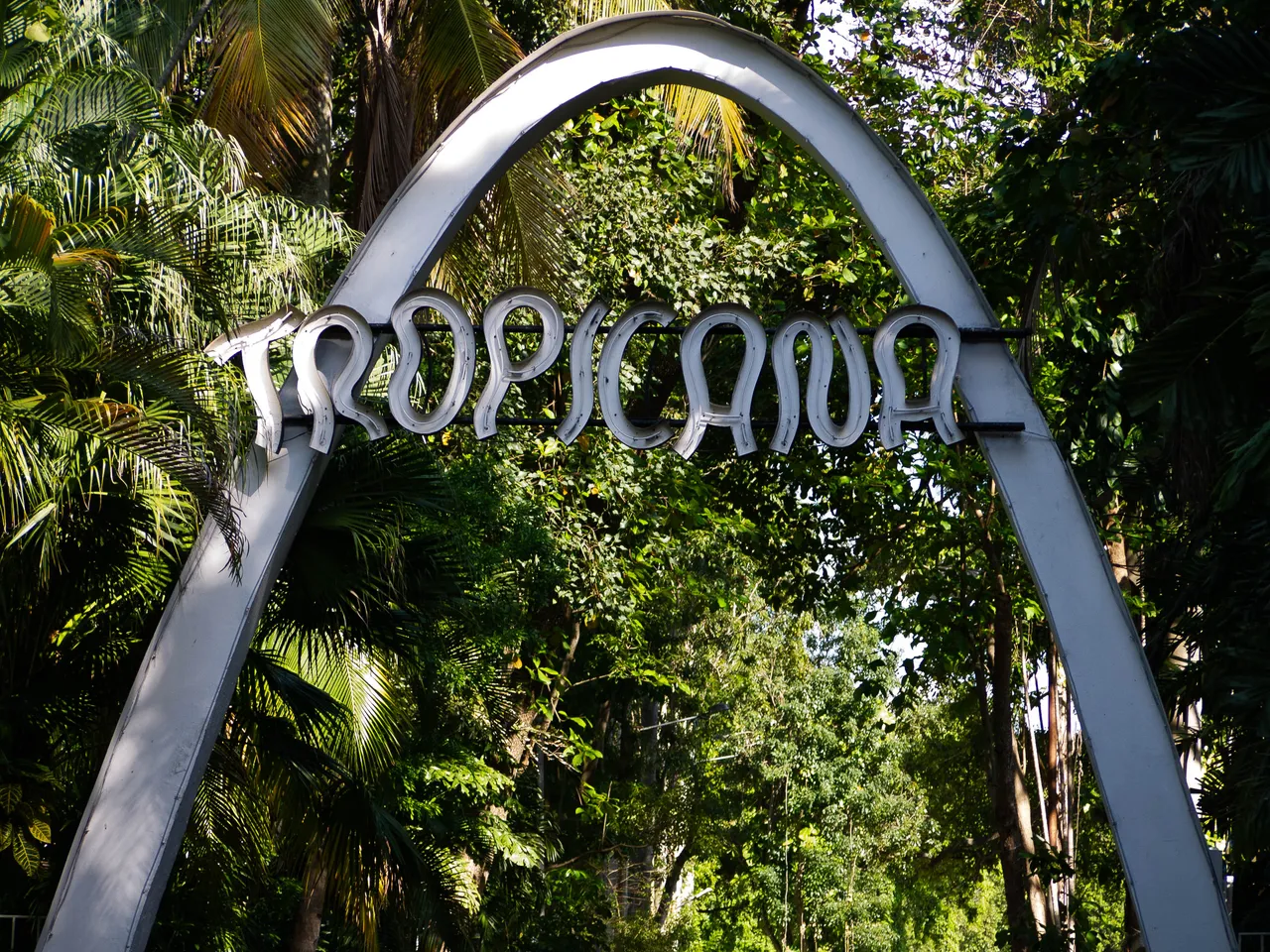
Por supuesto aproveché para hacer más fotos y mostrarte un poco esta parte de la ciudad. No es muy cómodo esto de fotografiar acompañada de mi amiga de dos ruedas, porque es muy demandante. Hay que estar vigilándola. 👀

Encontré un parque.

Como te comenté hay muchos árboles en esa zona y se destacan las palmas reales, las ceibas, los pinos y los framboyanes.
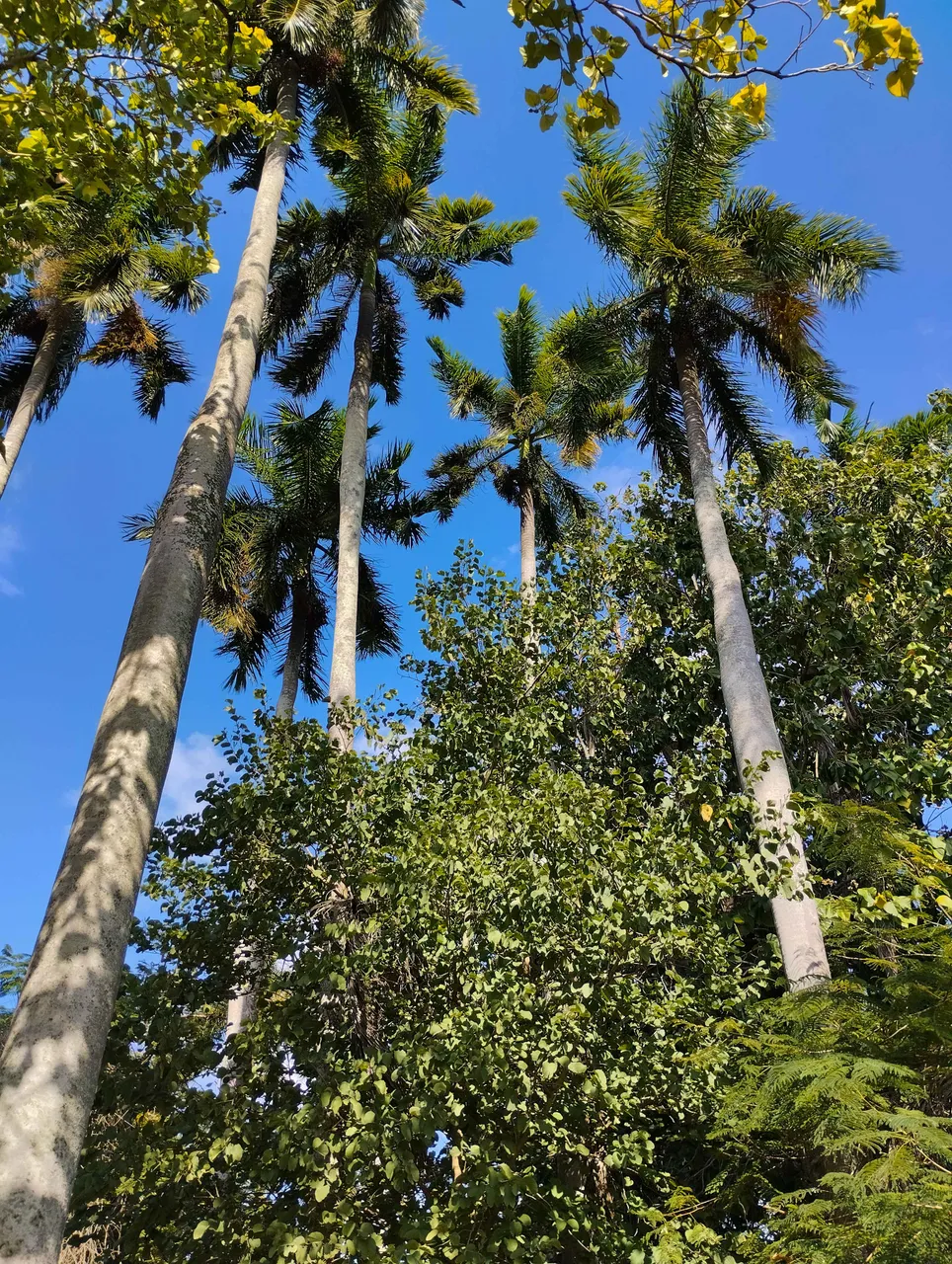 | 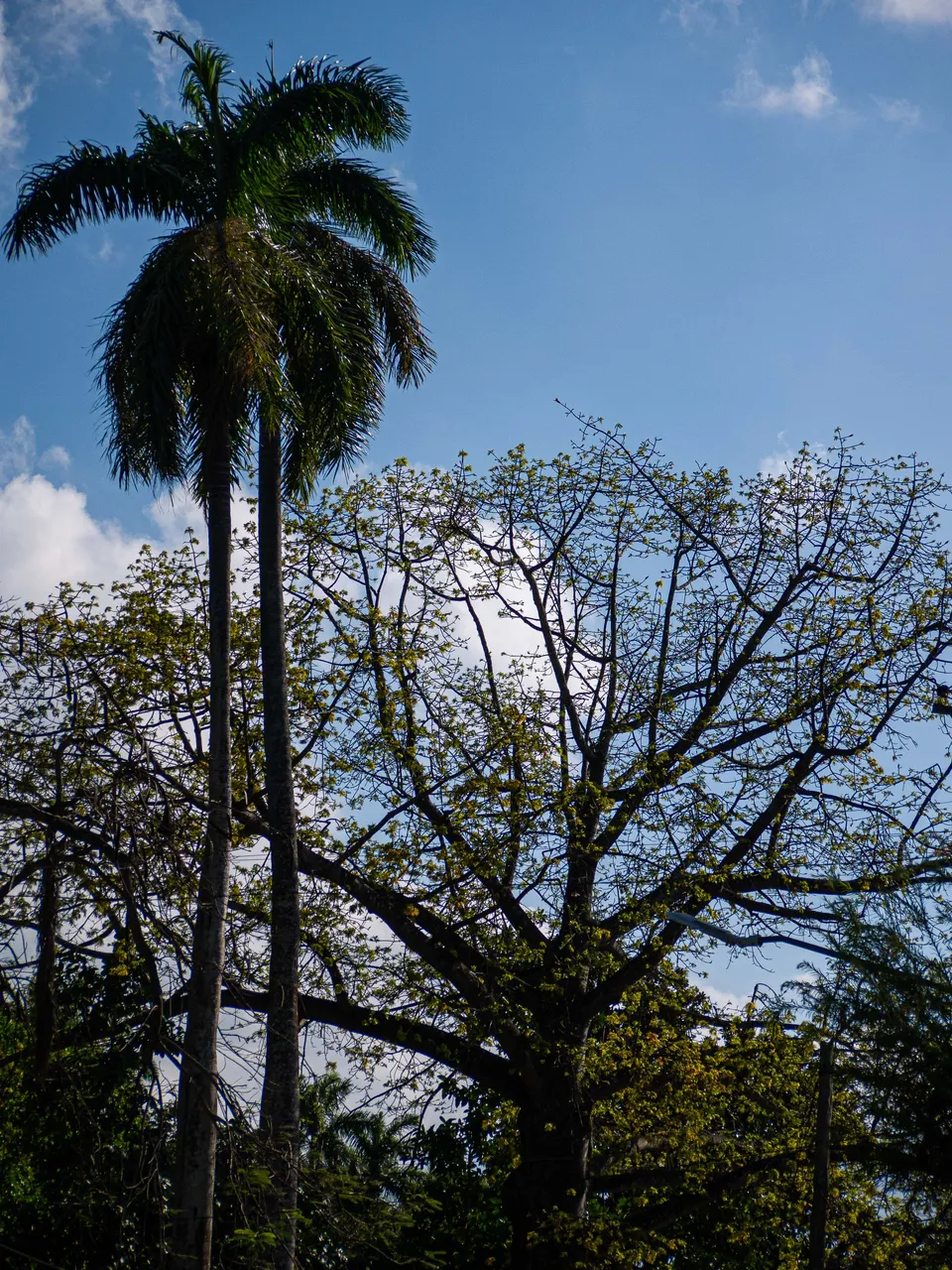 | 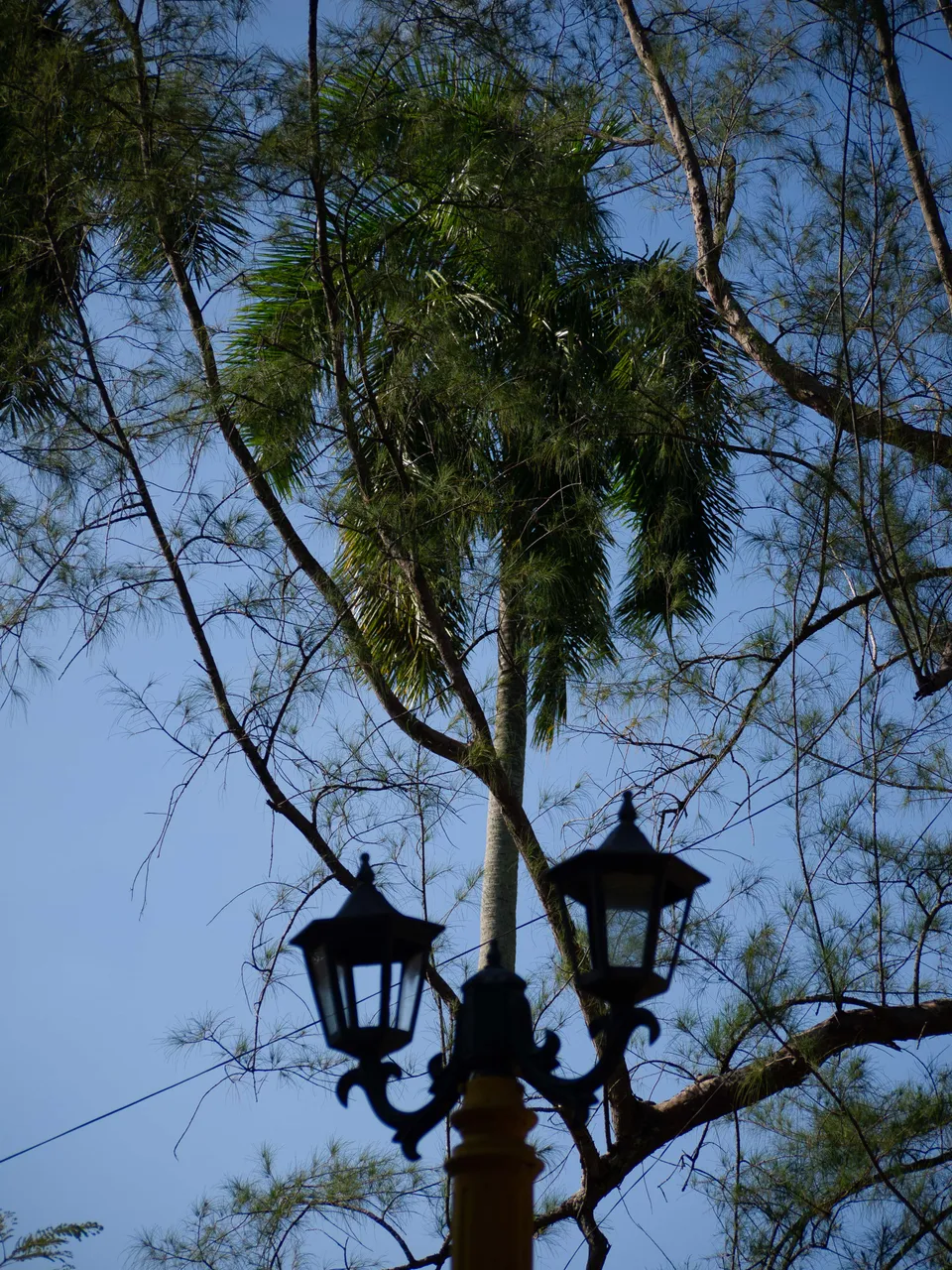
|
|---|
Sabes que tengo la debilidad de fotografiar los postes y cables eléctricos. Esta escena era un poco peluda 😐... diferente.
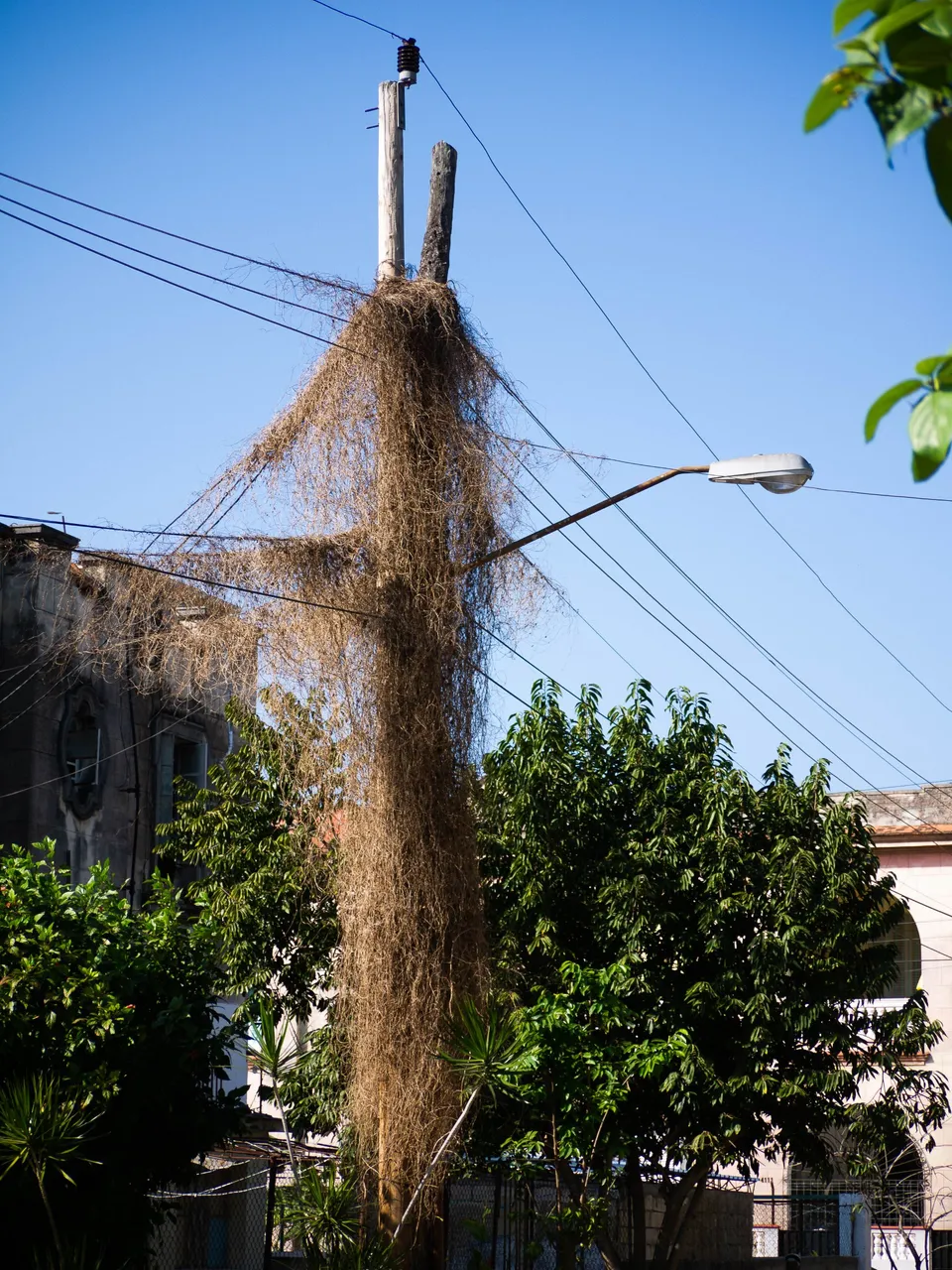
Y aquí es muy fuerte el contraste entre el practicante de la religión yoruba (iyabó) y los llamados buzos, que revisan los latones de basura a ver qué pueden encontrar. Por un momento pensé que buscaban sobras de comida para pollos o cerdos. ¿Quién sabe?
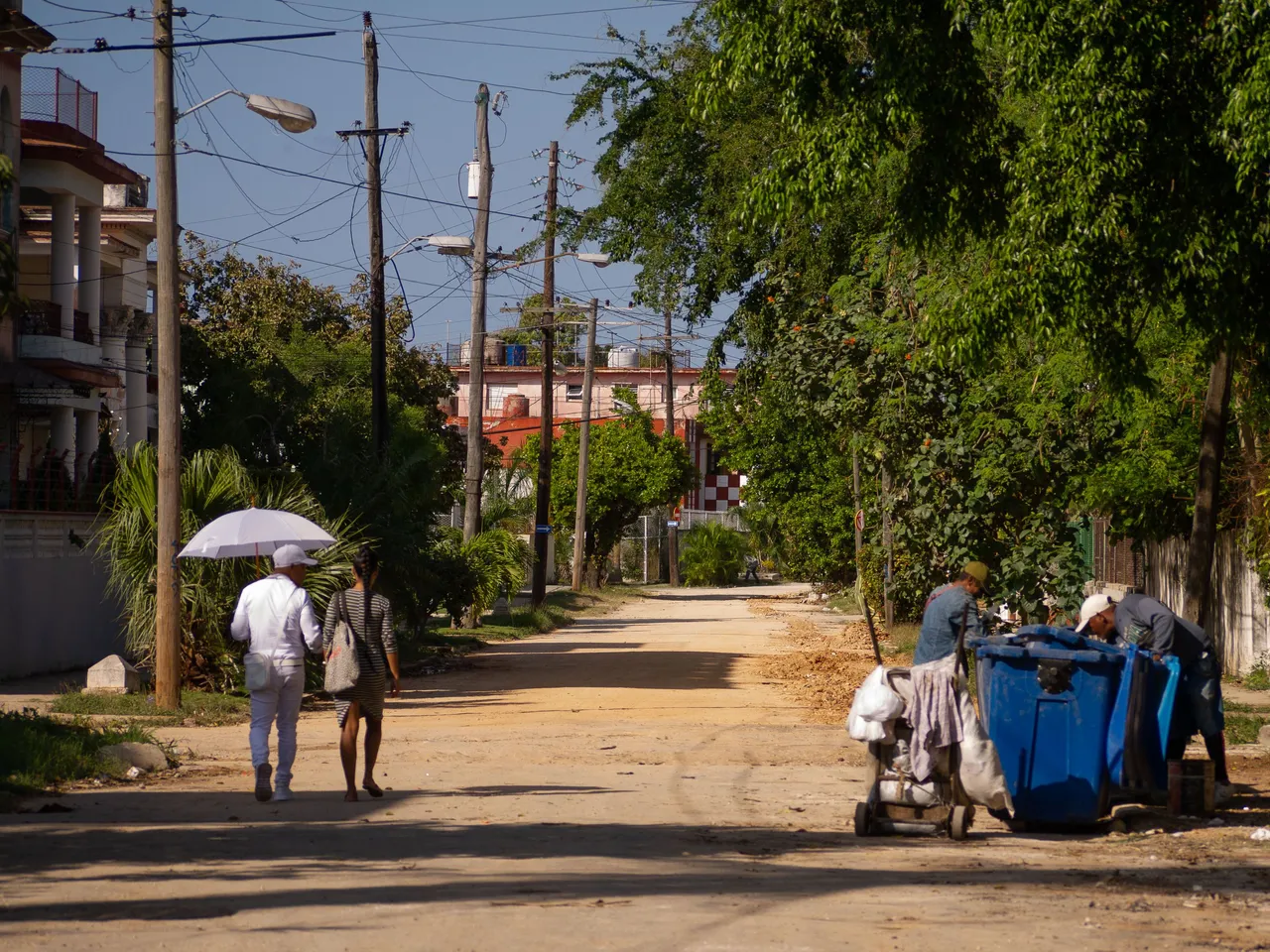
Ya casi estaba decidida a regresar pero esto de hacer fotos es siempre más fuerte que todo.

¿Dónde estaba? 😁

Y antes de seguir pedaleando, un disparo más.
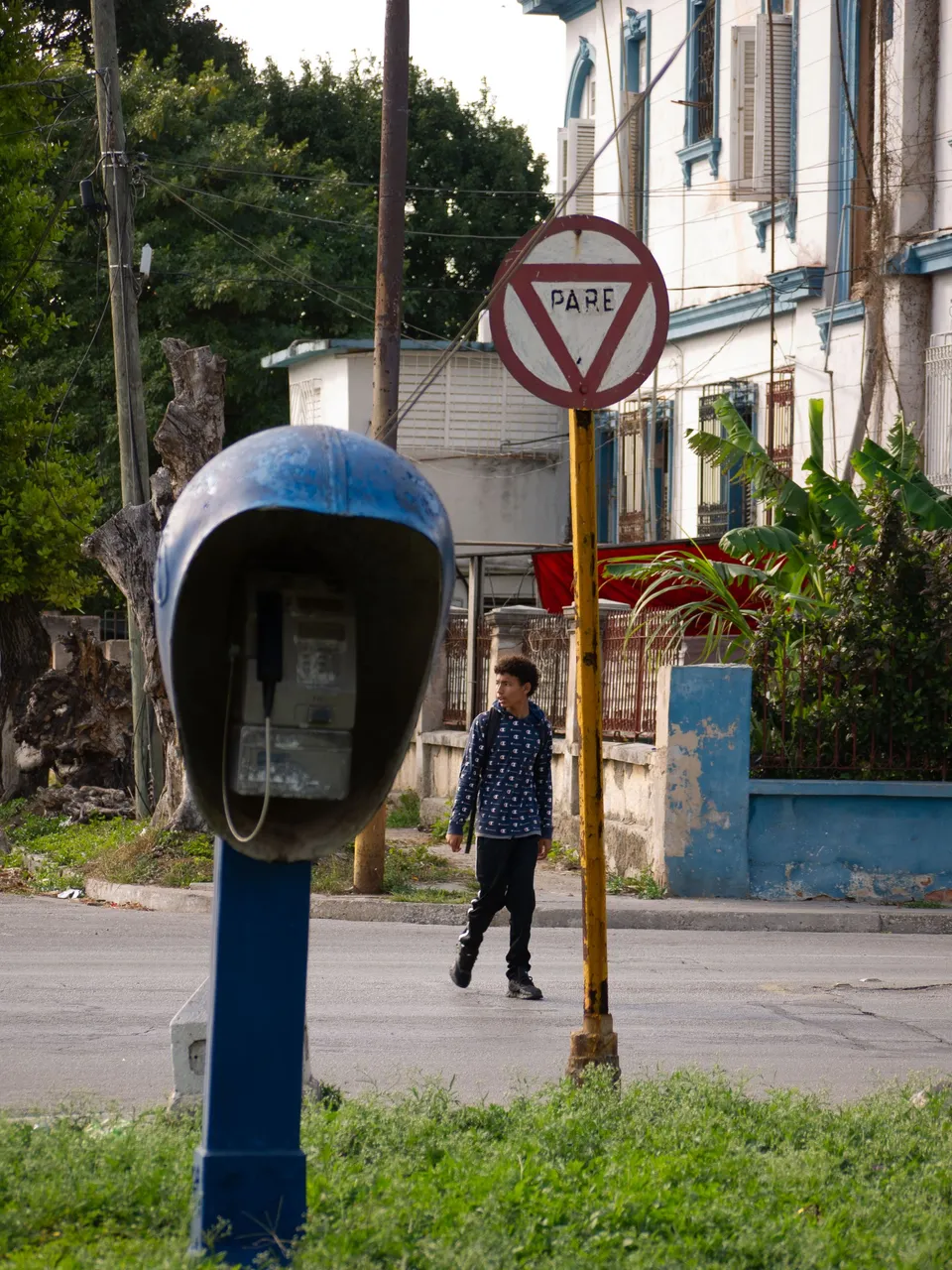
Aquí hay trampa... ¿lo ves?
Estas cabinas telefónicas son inservibles. Rara vez funcionan. Me sorprendió que esta conserve todavía el teléfono.
El extra-interesante del que te hablaba es esto 👇

La casa embrujada.
Pero ya la visitaremos. No sé si te has dado cuenta, pero aquí lo mismo hay fotos con la cámara que con el móvil. Ya te digo, es complicado hacer esto con la bicicleta porque no me puedo apartar de ella. Estoy en plena ciudad, pendiente del tráfico, de los transeúntes, y como ando sola, bueno con mi amiga de dos ruedas, tengo varias cosas que proteger, incluyéndome.
Otros sitios de interés por los que pasé.
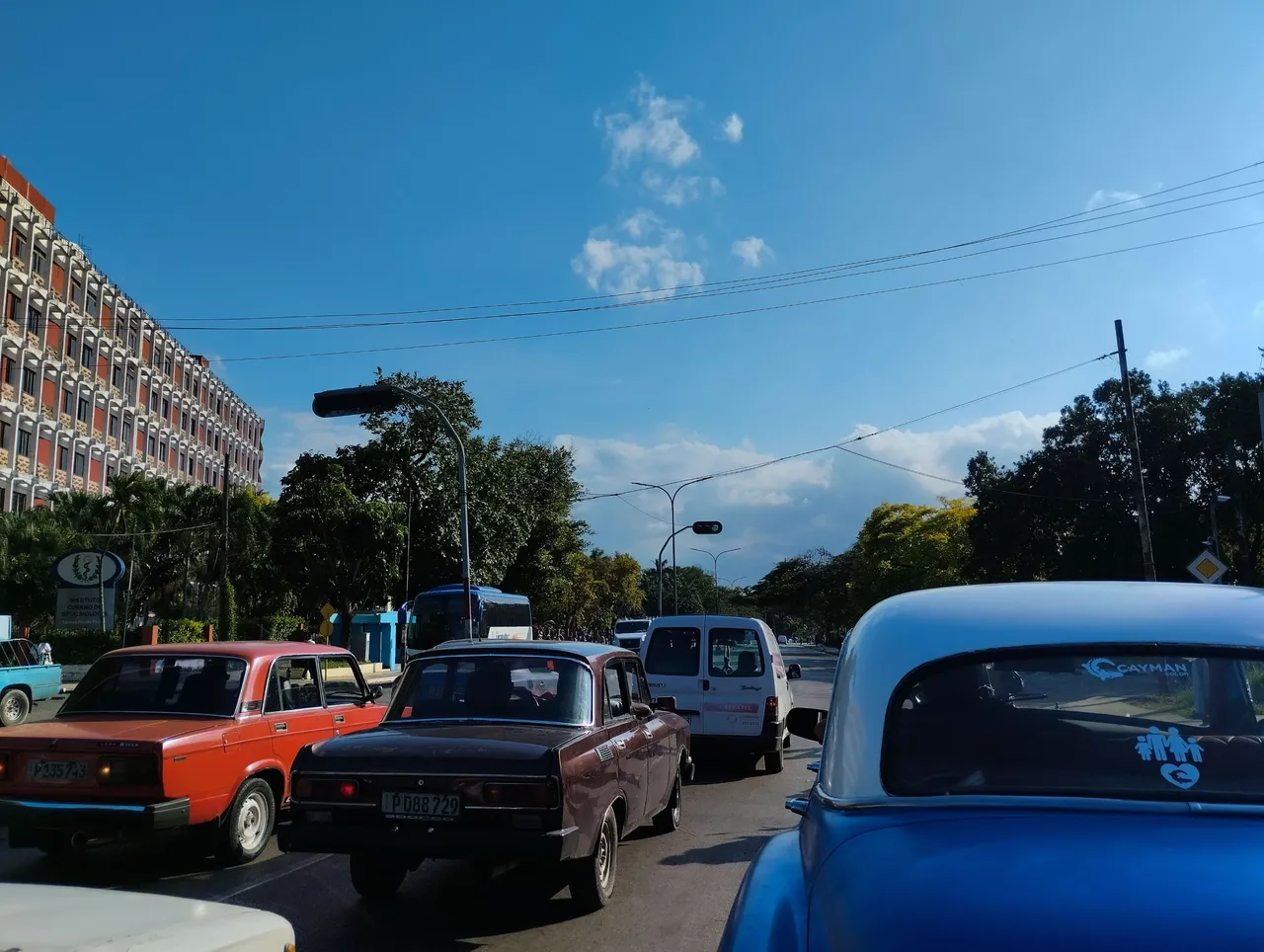
A la izquierda el Instituto Cubano de Oftalmología o Liga contra la Ceguera como le llamamos aquí. Es un centro investigativo, y también un hospital clínico-quirúrgico que también ofrece diariamente servicios a la población y no solo a cubanos, sino también a personas de otros países. Muchos venezolanos, por ejemplo, han sido operados de catarata aquí y han recuperado totalmente su visión.
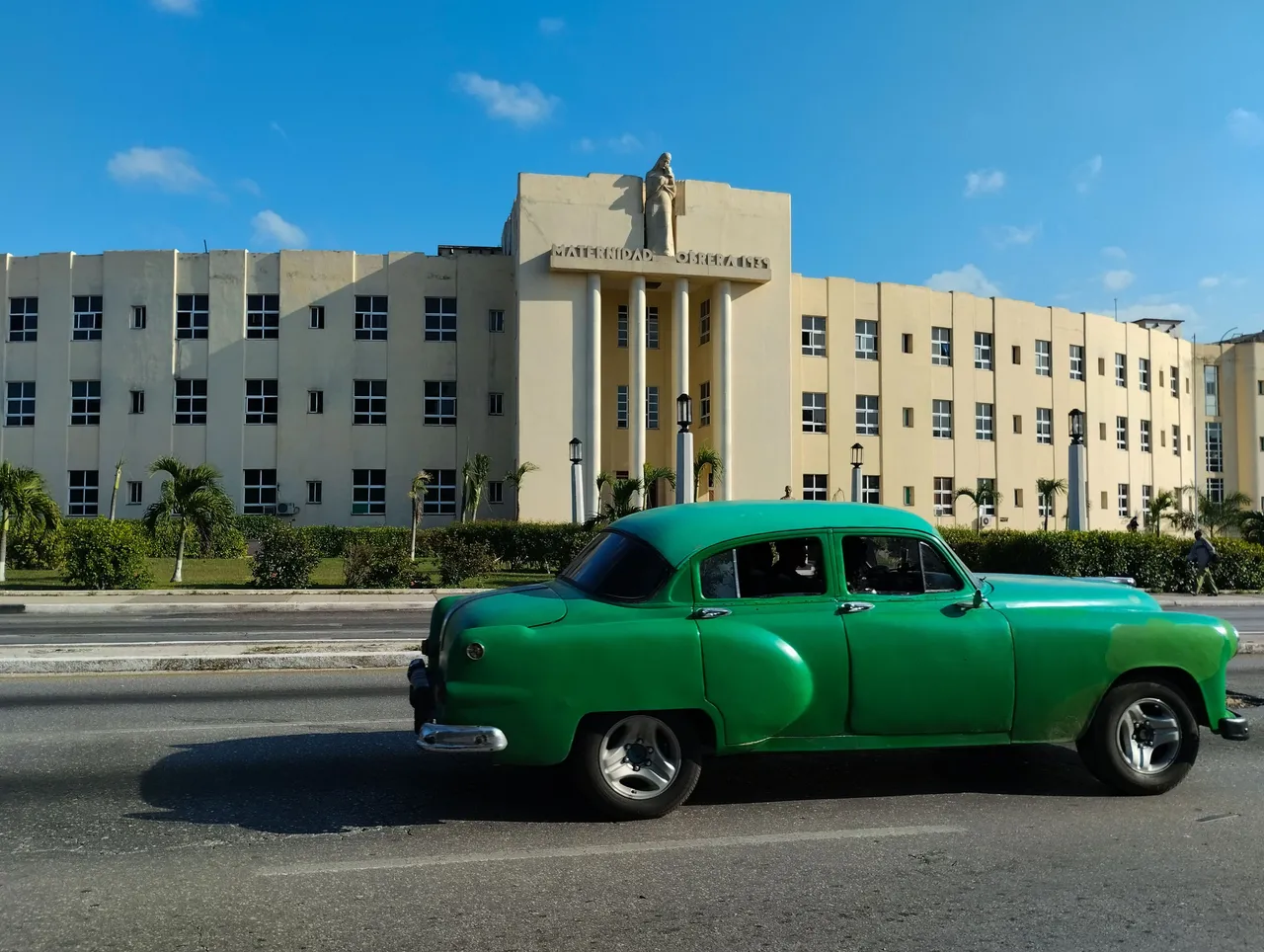
Maternidad obrera. El lugar donde han nacido miles de cubanos destaca por su arquitectura Art Decó. Fue en 1939 cuando el general Fulgencio Batista colocó la primera piedra de esta obra que le había sido encargada al arquitecto Emilio de Soto. Su inauguración tuvo lugar en 1941 y llegó a ser muy prestigioso y conocido a nivel internacional por su tecnología de última generación. Hoy lleva el nombre de Hospital Ginecobstétrico Eusebio Hernández Pérez, aunque la mayoría de las personas lo siguen llamando por su denominación original.
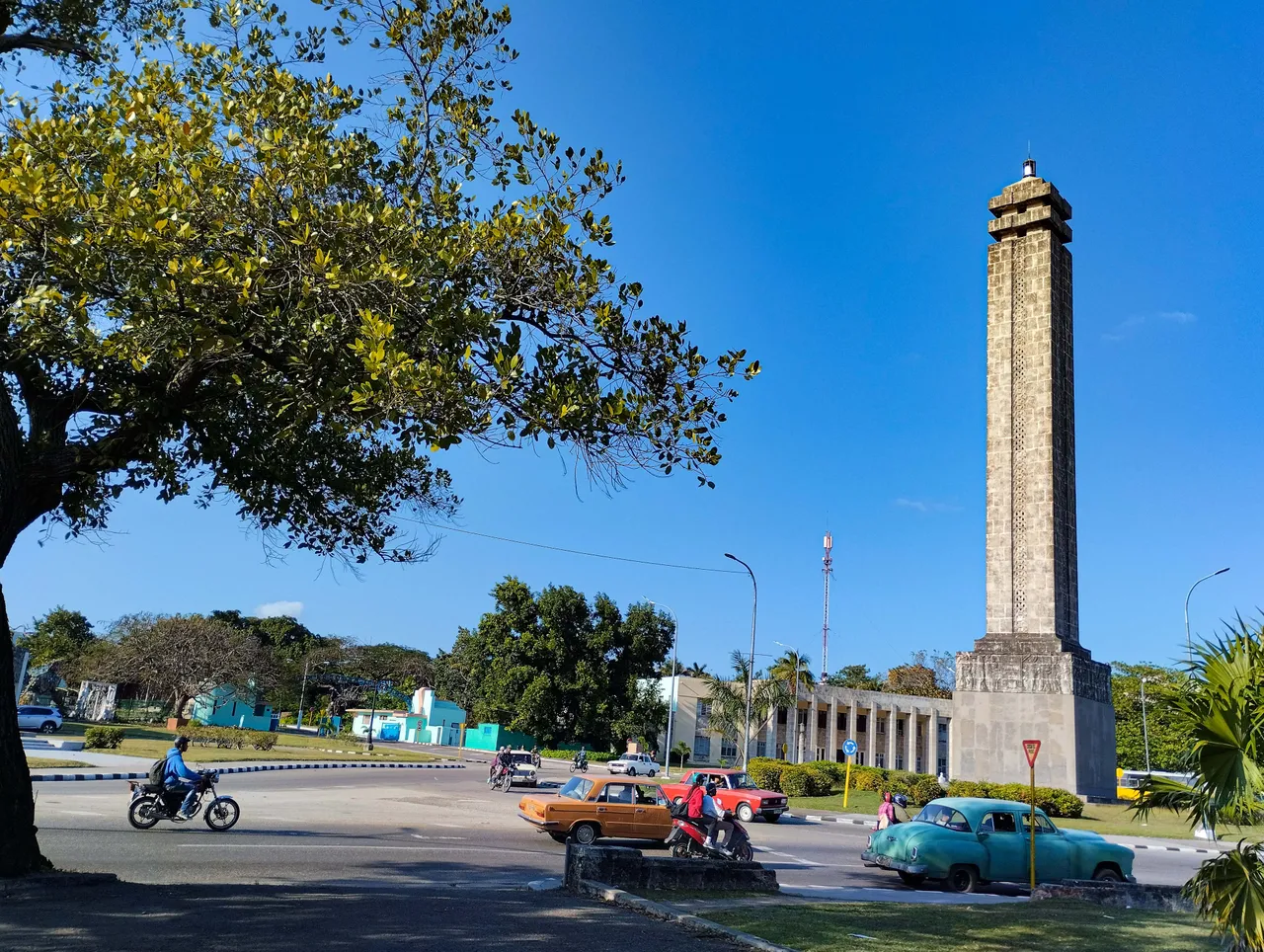
El Obelisco de Marianao. Monumento ubicado en la intersección de las calles 31 y 100, a la entrada de un antiguo campamento militar que fue convertido en un Complejo Científico Pedagógico.
Su altura es de 32 metros y 8 metros cuadrados de base y fue realizado para servir de faro a aviones militares. Todavía conserva su linterna o fanal en su parte superior.
Años después, con el triunfo de la Revolución, fue dedicado a la memoria de un importante doctor y epidemiólogo cubano, Carlos J. Finlay, descubridor del modo de transmisión de la fiebre amarilla. Es el elemento central de un complejo compuesto por otras cuatro edificaciones (un asilo y tres escuelas) muy semejantes entre sí. Una de ellas es la longeva Academia Nacional de Bellas Artes San Alejandro, que se considera el centro docente de más larga data en Cuba y primero de su tipo en Hispanoamérica.
Ya solo quedaba incorporarme a la calle 100 y pedalear hasta la casa, sin embargo hice una breve parada en una cafetería. Me tomé una malta, compré un maní molido y una barra de chocolate. Esta deportista no entiende nada de excesos de calorías. 😅
My bike and I had a bit of fun. We decided to go to a cabaret, to a paradise under the stars, but it was daytime. 😅
Hahaha... I've started! 😜
No, wait, let me tell you all the details of this trip properly. We went to the cabaret, we did. Don't doubt that. I'm talking about the iconic Tropicana, which is relatively close to where I live. What am I saying? It's not that close, nothing is that close for a beginner cyclist. Google Maps says it takes 20 minutes to go and come back by car, but you can't measure it like that, because I had my camera, I stopped a few times during the ride, explored and found something extra and very interesting that I'll only give you a little preview of here. So our trip lasted a little over 2 hours.


It was a tasty 10 kilometres. Nothing, really. And we certainly couldn't get into the cabaret for three reasons:
1 - It was rented for an activity.
2 - It was in the daytime anyway, and Tropicana dancers only dance at night.
3 - And well... we weren't properly dressed. 😁
Tropicana was created in 1939 in a wooded area of the Marianao municipality. The nickname of paradise under the stars is due to the fact that it was conceived in the open air, which makes it a little different from traditional cabarets.
It offers a very creative show that draws from ballet, circus art, carnival, bolero, cha-cha-cha and folklore. Dance and song merge there with a lot of colour, grace and style, which has brought this place international fame. I have to be honest, I'm not much of a cabaret-goer, although I have to admit that our foreign visitors have a great time there.
This is what I have to show for our fun outing to Tropicana.

This is the sign you see on 41st Ave. and it was being restored, as you can see.

There I entered the street leading to the cabaret and was able to take in other views.

This is an alley next to Tropicana.

And they seem to be bored with the activity. 😂

Of course, I took the opportunity to take more pictures and show you a bit of this part of the city. It's not very comfortable to photograph accompanied by my two-wheeled friend, because it's very demanding. I have to keep an eye on her. 👀

I found a park.

As I mentioned, there are many trees in that area, and the royal palms, ceibas, pines, and flamboyant trees stand out.
 |  | 
|
|---|
You know I have a weakness for photographing poles and power lines. This scene was a bit hairy 😐... different.

And here the contrast between the practitioner of the Yoruba religion (Iyabó) and the so-called divers, who go through the rubbish cans to see what they can find, is very strong. For a moment I thought they were looking for leftover food for chickens or pigs. Who knows?

I was almost determined to go back, but this photographic thing is always stronger than anything else.

Where was I? 😁

And before continuing pedaling, one more shot.

There's a trick here... You see?
These phone boxes are useless. They rarely work. I was surprised that this one still has the phone.
The extra-interesting one I was telling you about is this 👇

The haunted house.
But we'll visit it later. I don't know if you've noticed, but here you can take photos with both the camera and the phone. I'm telling you, it's difficult to do this with the bike because I can't leave it. I'm in the middle of the city, watching out for traffic, pedestrians, and since I'm alone, well, with my two-wheeled friend, I have several things to protect, including myself.
Other places of interest I passed by

On the left is the Cuban Institute of Ophthalmology or the League Against Blindness as we call it here. It is a research centre, and also a clinical-surgical hospital that also offers daily services to the population and not only to Cubans, but also to people from other countries. Many Venezuelans, for example, have had cataract surgery here and have completely recovered their sight.

Maternidad obrera. The place where thousands of Cubans have been born stands out for its Art Deco architecture. It was in 1939 when General Fulgencio Batista laid the first stone of this work that had been commissioned to the architect Emilio de Soto. It was inaugurated in 1941 and became very prestigious and internationally known for its state-of-the-art technology. Today it bears the name of Gynaecological Obstetric Hospital Eusebio Hernández Pérez, although most people still call it by its original name.

The Obelisk of Marianao. This monument is located at the intersection of 31st and 100th streets, at the entrance to a former military camp that was converted into a Scientific Pedagogical Complex.
It is 32 metres high and has a base of 8 square metres, and was built to serve as a lighthouse for military aircraft. It still has its lantern or beacon at the top.
Years later, with the triumph of the Revolution, it was dedicated to the memory of an important Cuban doctor and epidemiologist, Carlos J. Finlay, who discovered how yellow fever was transmitted. It is the central element of a complex made up of four other buildings (an asylum and three schools) that are very similar to each other. One of them is the long-standing San Alejandro National Academy of Fine Arts, which is considered the longest-established teaching centre in Cuba and the first of its kind in Latin America.
All that remained was to join the 100th street and cycle home, but I made a brief stop at a snack shop. I had a malt, bought a ground peanut and a chocolate bar. This athlete doesn't understand anything about excess calories. 😅
Original content by @nanixxx. All rights reserved ©, 2024.